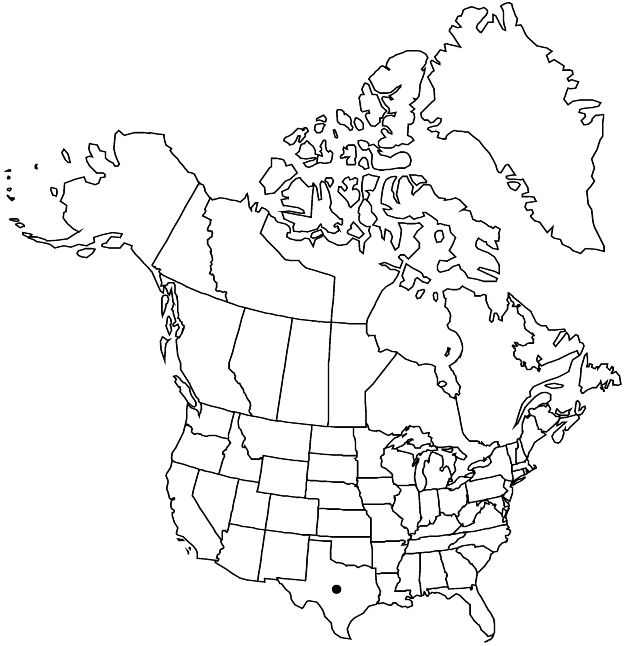Difference between revisions of "Croton soliman"
Linnaea 6: 361. 1831.
FNA>Volume Importer |
FNA>Volume Importer |
(No difference)
| |
Revision as of 18:20, 24 September 2019
Shrubs, 5–8 dm, monoecious. Stems sparsely branched distally, sparsely stellate-hairy. Leaves not clustered; stipules linear, (0–)1–2 mm, sometimes short stipitate-glandular; petiole 1–2 cm, 2/5–1/2 leaf blade length, glands absent at apex; blade ovate, 2–5 × 1.5–2.5 cm, base rounded-cuneate, margins entire, with scattered glandular-capitate processes 1 mm, usually denser at base, apex acute to acuminate, abaxial surface green, glabrous or sparsely stellate-hairy, usually along margin, adaxial surface slightly darker green, glabrous. Inflorescences bisexual, racemes, 2–4 cm, staminate flowers 10–30, pistillate flowers 3–6. Pedicels: staminate 1–5 mm, pistillate 2–5 mm. Staminate flowers: sepals 5, 0.8–1 mm, abaxial surface sparsely stellate-hairy; petals 5, spatulate, 1–1.3 mm, abaxial surface glabrous except margins ciliate basally; stamens 15–20. Pistillate flowers: sepals 5, unequal, 5–6 mm, margins entire, apex straight to slightly incurved, abaxial surface glabrous or with a few stellate hairs; petals 0 or 5, white, linear, 2.5–3.5 mm; ovary 3-locular; styles 3, 3–4 mm, 4-fid, terminal segments 12. Capsules 6 × 5–6 mm, smooth; columella apex with 3 rounded, inflated lobes. Seeds 4–5 × 3–4 mm, shiny.
Phenology: Flowering May–Jul.
Habitat: Thickets, low ridges.
Elevation: 0–50 m.
Distribution

Tex., e, s Mexico.
Discussion
Croton soliman is most similar to C. humilis. In the flora area, C. soliman is found only in Cameron County.
Selected References
None.